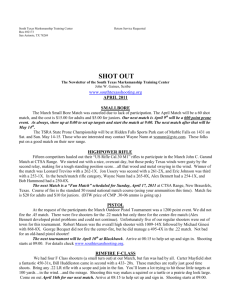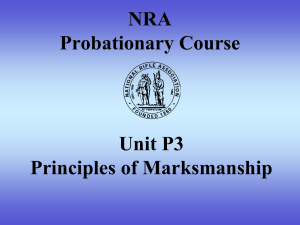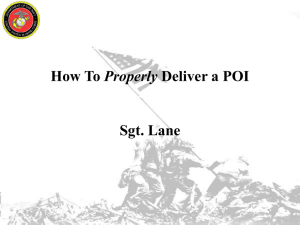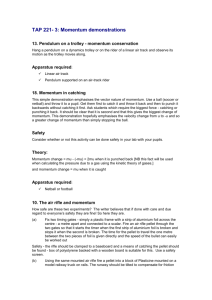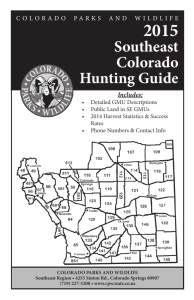S-Class-Proposal-R5 - Sporting
advertisement
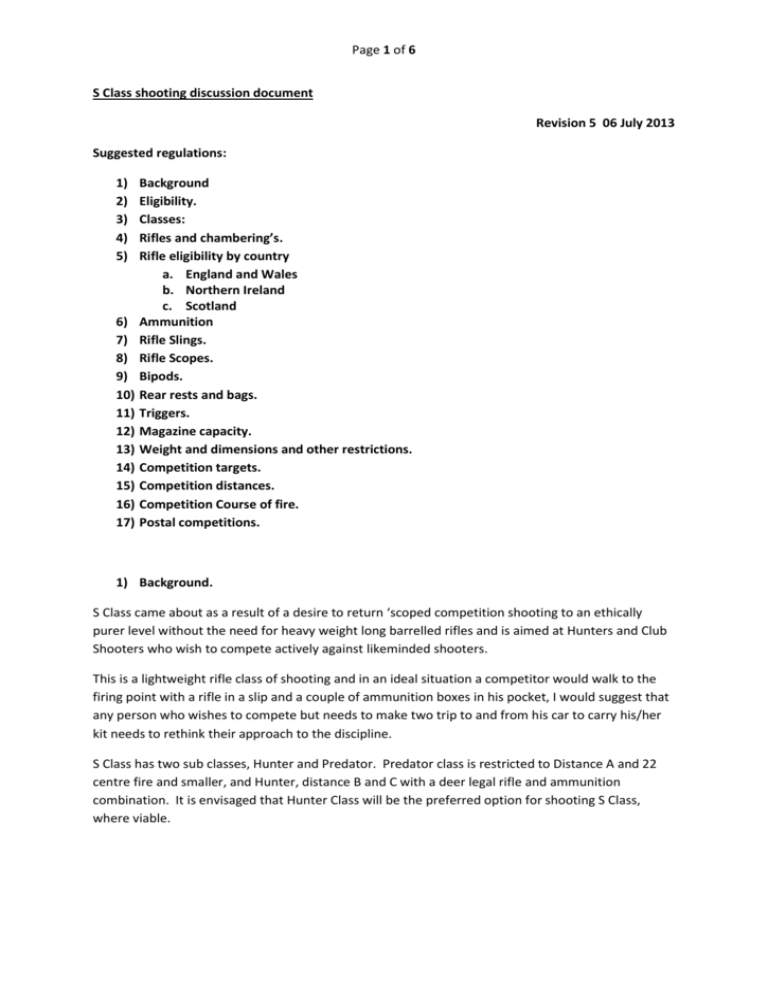
Page 1 of 6 S Class shooting discussion document Revision 5 06 July 2013 Suggested regulations: 1) 2) 3) 4) 5) 6) 7) 8) 9) 10) 11) 12) 13) 14) 15) 16) 17) Background Eligibility. Classes: Rifles and chambering’s. Rifle eligibility by country a. England and Wales b. Northern Ireland c. Scotland Ammunition Rifle Slings. Rifle Scopes. Bipods. Rear rests and bags. Triggers. Magazine capacity. Weight and dimensions and other restrictions. Competition targets. Competition distances. Competition Course of fire. Postal competitions. 1) Background. S Class came about as a result of a desire to return ‘scoped competition shooting to an ethically purer level without the need for heavy weight long barrelled rifles and is aimed at Hunters and Club Shooters who wish to compete actively against likeminded shooters. This is a lightweight rifle class of shooting and in an ideal situation a competitor would walk to the firing point with a rifle in a slip and a couple of ammunition boxes in his pocket, I would suggest that any person who wishes to compete but needs to make two trip to and from his car to carry his/her kit needs to rethink their approach to the discipline. S Class has two sub classes, Hunter and Predator. Predator class is restricted to Distance A and 22 centre fire and smaller, and Hunter, distance B and C with a deer legal rifle and ammunition combination. It is envisaged that Hunter Class will be the preferred option for shooting S Class, where viable. Page 2 of 6 2) Eligibility. Any UK shooter with a Sporting, Hunting or Stalking type rifle either factory or modified factory is permitted to compete in the S Class subject to the rifle minimum calibre, muzzle energy and bullet weight laid down in section 5.a, 5.b & 5.c (Hunter Class) and/or range limitations (Predator/Hunter) NOTE – the eligibility of a rifle applies to shooters of that country or region only so if you are geographically based in Scotland your rifle must conform to the minimum Deer requirements for Scotland however you can compete with it in other countries and or regions. 3) Classes: Predator Class – Small deer/vermin Rifles: 22 Centre fire and smaller. Hunter Class – Small/Large deer: 22 Centre fire and larger. See individual countries for minimum requirements. Unless specifically stated, all rules and requirements will apply to both sub classes. 4) Rifles and chambering’s. Repeater and single/two shot break type rifles in either bolt action or straight pull in the style and spirit of a Hunting, Stalking or Sporter type based on the BASC minimum requirements for Deer/fox/vermin control. 5) Rifle eligibility by country. (Hunter Class) This will be based on the laid down minimum requirements as detailed by BASC for your country or region, The use of expanding ammunition may not be permitted on all ranges so it is the shooters responsibility to confirm the loaded ammunition they are shooting is range legal. a) England and Wales For Muntjac and Chinese Water deer only- a rifle with a minimum calibre of not less than .220 inches and muzzle energy of not less than 1000 foot pounds and a bullet weight of not less than 50 grains may be used. For all deer of any species - a minimum calibre of .240 and minimum muzzle energy of 1,700 foot pounds is the legal requirement. b) Northern Ireland For Muntjac and Chinese Water deer only- a rifle with a minimum calibre of not less than .220 inches and muzzle energy of not less than 1000 foot pounds and a bullet weight of not less than 50 grains may be used. For all deer of any species - a minimum calibre of .236 inches, a minimum bullet weight of 100 grains and minimum muzzle energy of 1,700 foot pounds is the legal requirement. Page 3 of 6 c) Scotland For roe deer, where the bullet must weigh at least 50 grains AND have a minimum muzzle velocity of 2,450 feet per second AND a minimum muzzle energy of 1,000 foot pounds may be used. For all deer of any species - the bullet must weigh at least 100 grains AND have a minimum muzzle velocity of 2,450 feet per second AND a minimum muzzle energy of 1,750 foot pounds. Predator Class: Must meet the general requirements for all S Class rifles. Generally speaking any rifle/cartridge (centre fire .17-.22) combination should be suitable – range regulations notwithstanding. 6) Ammunition Factory or hand loaded ammunition is acceptable using standard off the shelf components. The modification of bullets will not be accepted so no meplat trimming or bullet pointing. Muzzle Velocity must conform to local range orders, in the case of MoD ranges the maximum MV accepted will be 1000m/s 3280fps in line with MoD range requirements. 7) Rifle Slings. Slings are free and may be fitted and used however they will be included in the total weight of the rifle including a bipod if used or fitted. 8) Rifle Scopes. 'Scope if fitted will be a maximum of 12X and can be variable magnification any reticule. Open target or iron sights may be used as an alternative. The use of antic cant and cosine devices is not permitted. 9) Bipods. Bipod, any Harris or Harris clone of any height can be modified as you choose as long as it still looks like a Harris, this means as an example you can add a friction/podlock, modify the feet, chop bits off but it must originally have been a Harris type bipod. Versapod and Versapod clones will also be allowed along with any other similar bipod in the spirit of the class. 10) Rear rests and bags. No rear bags or rests. 11) Triggers. Triggers are free as long as they are safe. Set triggers will be permitted year one. Single or two stage triggers are permitted. Page 4 of 6 12) Magazine capacity. Single shot rifles will not be accepted other than break type hunting rifles. Magazines capacity is free and magazines can be either integral or removable format. Magazine followers for single feed are not allowed however rounds can be either hand or magazine fed to suit the user. 13) Weight and dimensions and other restrictions. Maximum rifle weight all up including 'scope and bipod if fitted 6Kgs/13.2 Lbs. Competitors may by their own choice shoot prone Bisley style without bipod or any other mechanical support, if this is the case a sling may be used however no part of the hand or fore arm must be in contact with anything other than the rifle, no other mechanical rests in any form may be used at the front of the rifle. Barrel length is 26″/660,0mm excluding moderators if fitted. Moderators will be allowed and will be included in the all up weight and overall barrel length (see above) Muzzle brakes will not be allowed. 14) Competition targets. Competition meetings are currently being shot using a 60cm FITA field archery target – scoring 1-5 plus V. Broken lines score up/ inward. Page 5 of 6 Alternate targets are as follows F Class targets, e.g. 0.5MOA V Bull, 1 MOA 5 ring etc. Hunter targets, typically full or half sized bunting targets without visible scoring zones so you need to know your animal anatomy. 15) Competition distances. To be shot at: Distance A: 100/200/300 yards/meters (Predator Class) Distance B: 200/300/500 yards/meters (Predator/Hunter) Distance C: 300/500/600 yards/meters (Hunter Class only) Distance D – Discretionary (Organising Club/Shooters choice out to 800 yards/metres) 16) Competition Course of fire. SIGHTING SHOTS x 2 per distance. Scoring shots 5 or 7 TBC Electronic aids and anemometers are not permitted on the firing point however printed or written drop tables are acceptable. Please note that you will be required to present a current Shooters Certification Card (SCC) in order to shoot on MoD ranges. Shooting under 1:1 supervision in the absence of a valid SCC may not be an option and should not be assumed to be acceptable. Page 6 of 6 17) Postal competitions The option to shoot some league matches as postal events will be available. Such competitions are currently being shot using the 60cm FITA target. Currently these targets are supplied at no cost, however this may change. These types of competition are obviously dependant on an honour system and needs to be discussed further.
